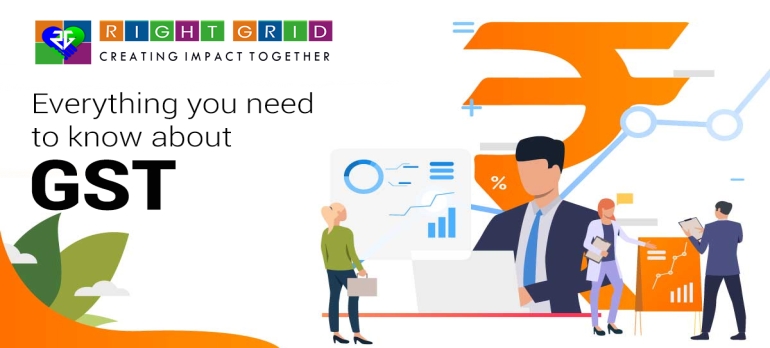
Everything You Need To Know About GST
In the world of finance and taxation, the Goods and Services Tax (GST) stands as a pivotal reform that has transformed the landscape of indirect taxation. Whether you're a business owner, a consumer, or simply someone curious about how taxation works, understanding GST is essential. In this comprehensive guide, brought to you by Right Grid, we'll delve into the intricacies of GST, its implications, benefits, and how it affects various stakeholders.
What is GST?
GST, or Goods and Services Tax, is a unified taxation system that replaces a myriad of indirect taxes levied by the central and state governments. Introduced in India on July 1, 2017, GST aims to simplify taxation, promote a common market, and enhance ease of doing business. Under GST, goods and services are taxed at every stage of production and distribution, with credit for taxes paid at previous stages.
Key Features of GST
One Nation, One Tax: GST unifies India's vast market by replacing multiple taxes like Central Excise, Service Tax, VAT, and others, creating a seamless nationwide market.
Multiple Slabs: GST categorizes goods and services into different tax slabs, ensuring that essential items are taxed at lower rates, while luxury goods attract higher rates.
Input Tax Credit: Businesses can claim input tax credit, allowing them to set off the tax paid on inputs against their final tax liability, promoting transparency and reducing cascading taxation.
Composition Scheme: Small businesses with a turnover up to a specified limit can opt for the composition scheme, simplifying compliance and reducing the tax burden.
Online Filing and Payment: GST is administered through an online portal, making tax filing and payment more efficient and transparent.
Impact on Businesses
GST has had a profound impact on businesses of all sizes:
Simplified Compliance: Businesses now deal with a single tax instead of a multitude of taxes, streamlining compliance and reducing administrative complexities.
Broader Tax Base: GST widens the tax base by bringing more sectors under the tax net, thereby increasing government revenue.
Elimination of Cascading Taxation: Input tax credit eliminates the cascading effect of taxes, leading to reduced production costs and ultimately benefiting consumers.
Ease of Doing Business: The unified tax system improves the ease of doing business in India, attracting foreign investment and boosting economic growth.
Impact on Consumers
For consumers, GST has brought about several changes:
Price Transparency: GST has reduced hidden taxes and increased transparency in pricing, enabling consumers to make more informed purchasing decisions.
Lower Tax Burden on Essentials: Essential commodities are generally taxed at lower rates, ensuring that the basic cost of living remains affordable.
Higher Tax on Luxury Goods: Luxury items attract higher GST rates, discouraging lavish spending and promoting equitable taxation.
Challenges and Future Outlook
While GST has brought about significant improvements, it also faces challenges such as complex compliance for small businesses, multiple tax slabs, and technology-related issues. However, the government continues to address these challenges and refine the system for smoother implementation.
Conclusion
In conclusion, the Goods and Services Tax (GST) represents a transformative step in the realm of taxation in India. Introduced to simplify the tax structure, promote transparency, and foster economic growth, GST has touched the lives of businesses and consumers alike. As we move forward, it is crucial to stay updated on any changes in the GST framework and its impact on the business landscape. At Right Grid, we are committed to keeping you informed and empowered in this ever-evolving financial landscape.
